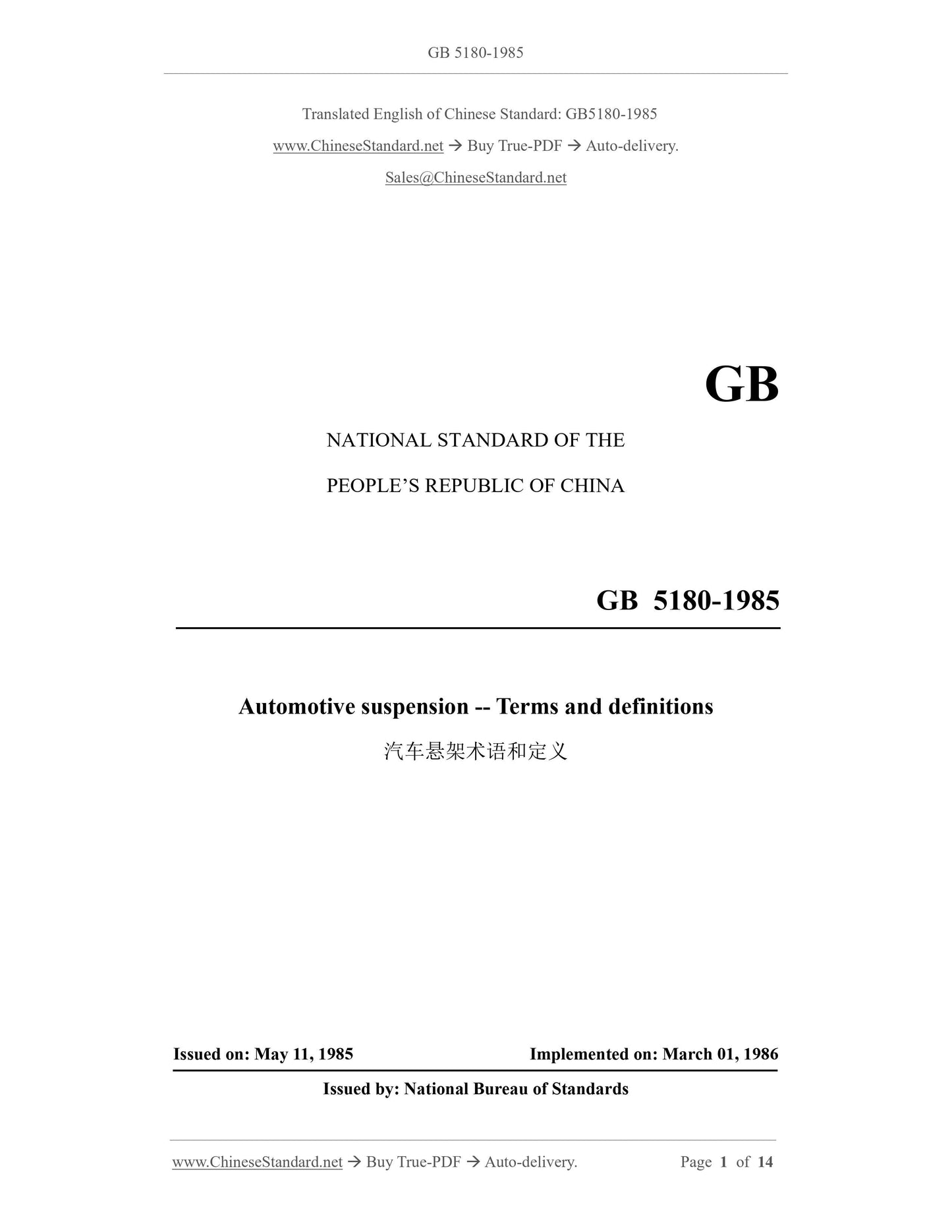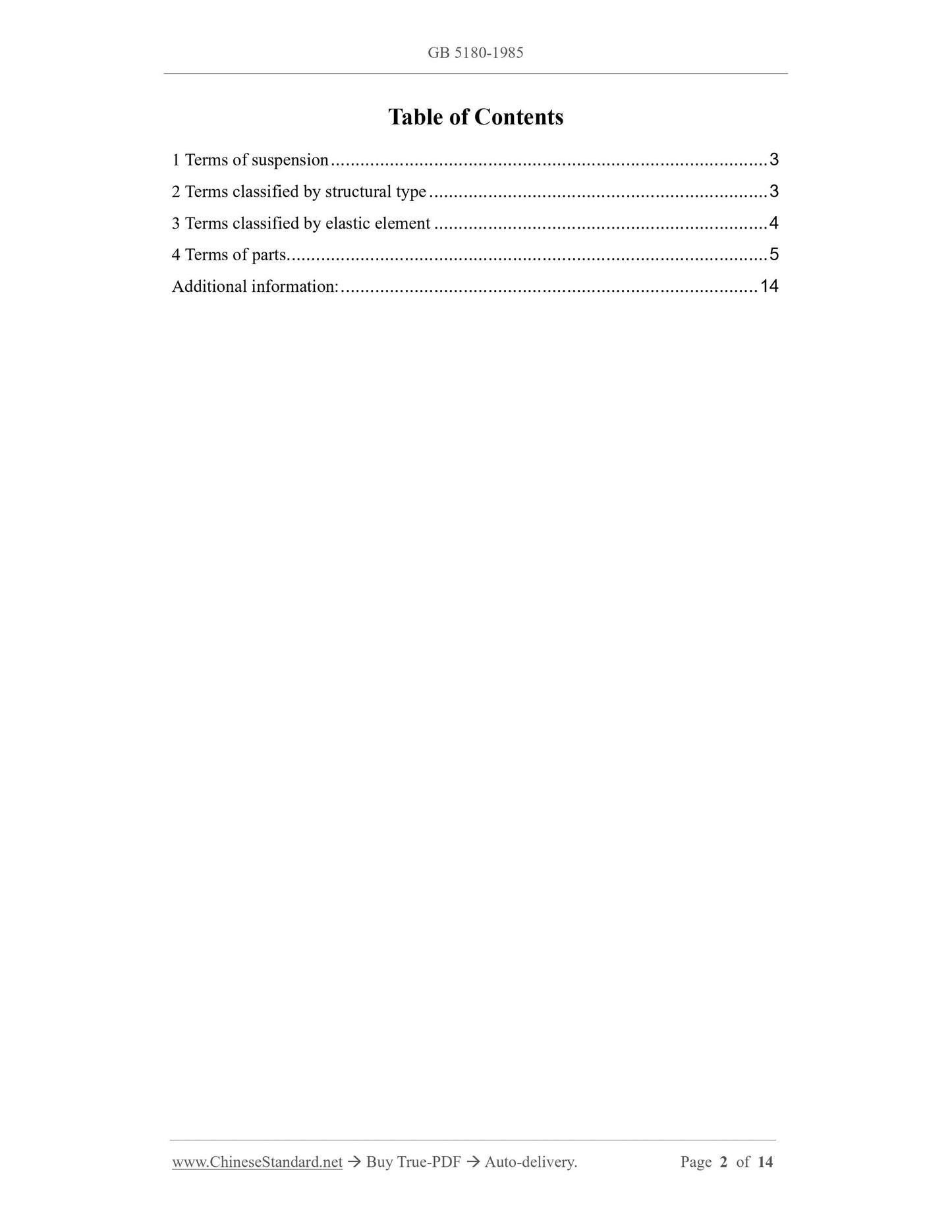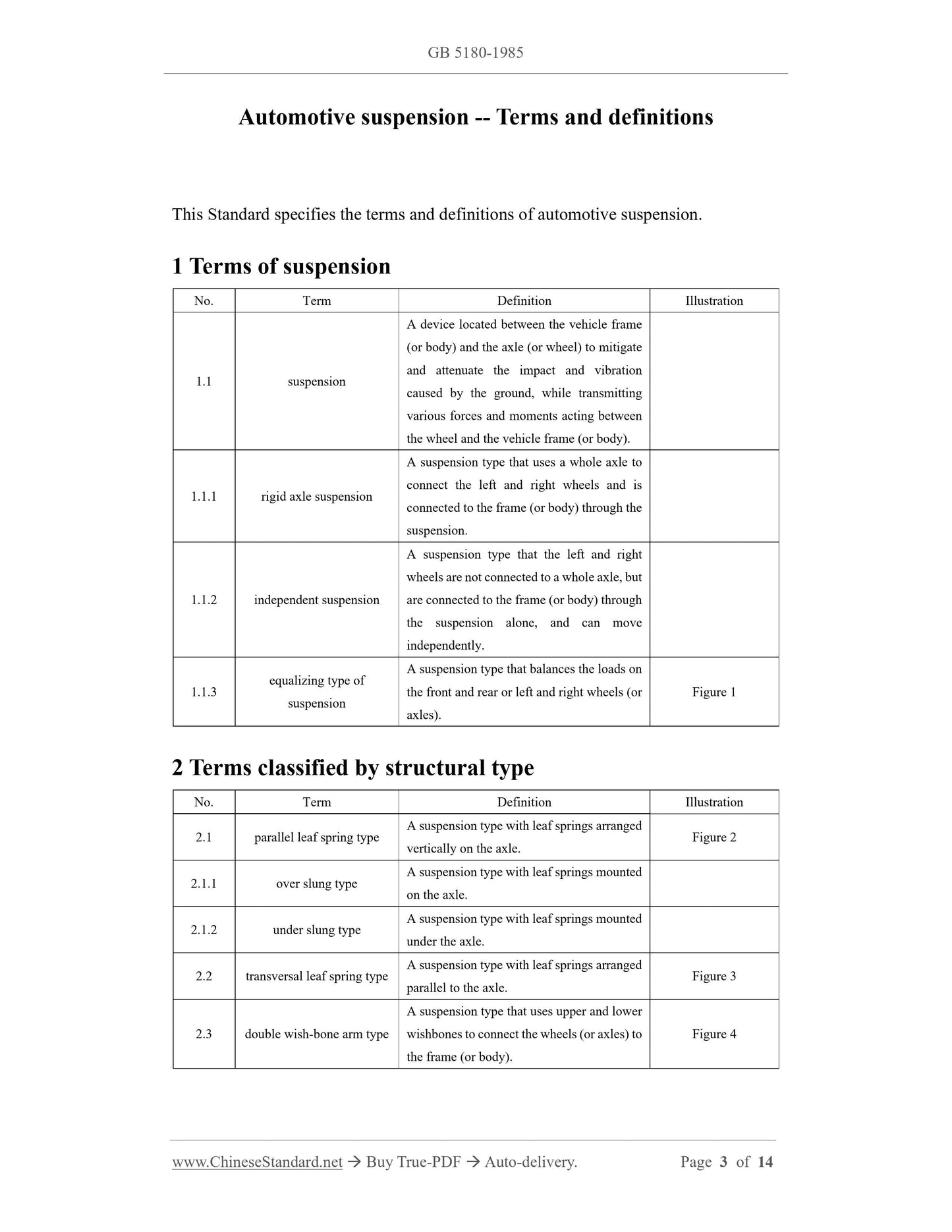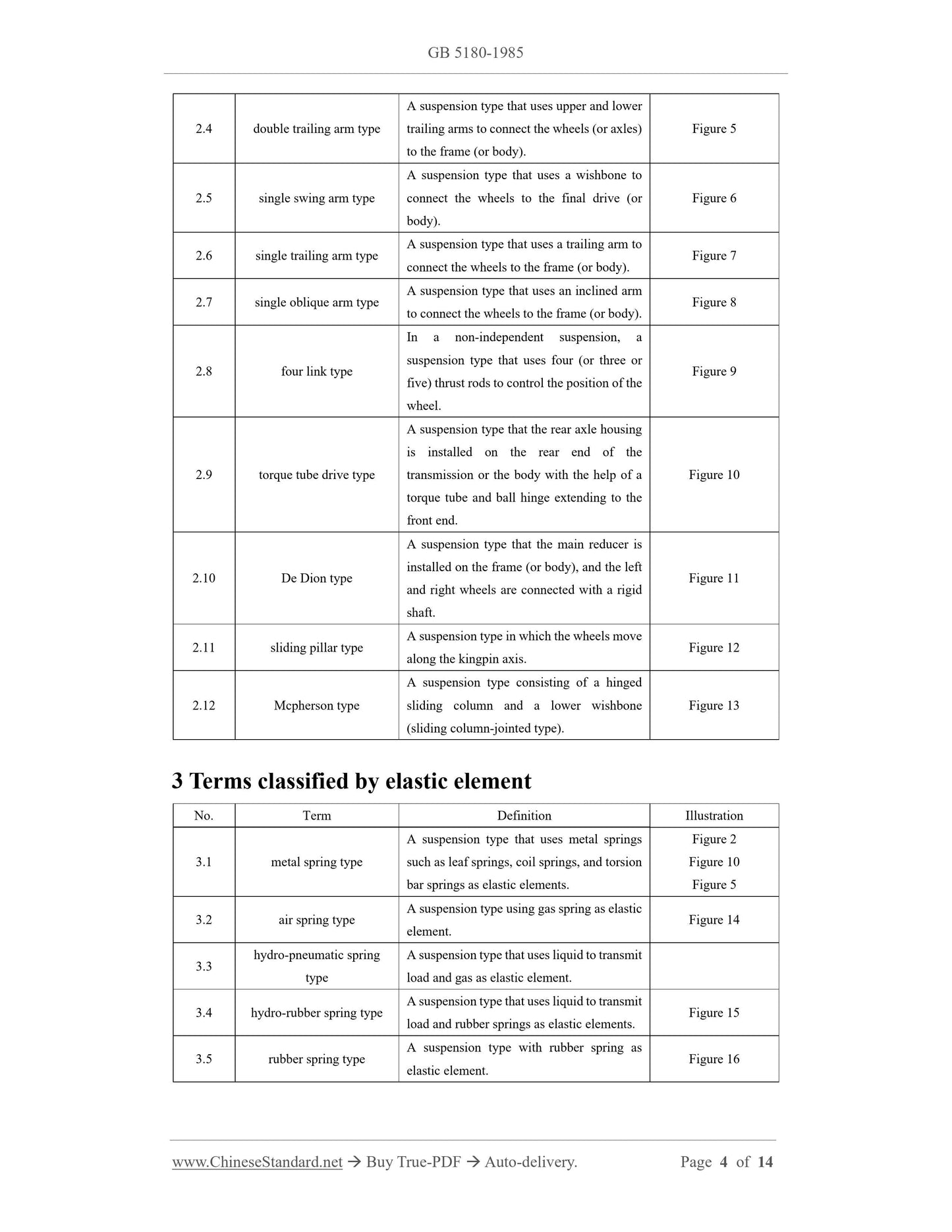1
/
of
4
www.ChineseStandard.us -- Field Test Asia Pte. Ltd.
GB 5180-1985 English PDF
GB 5180-1985 English PDF
Regular price
$495.00
Regular price
Sale price
$495.00
Unit price
/
per
Shipping calculated at checkout.
Couldn't load pickup availability
GB 5180-1985: Automotive suspension--Terms and definitions
Delivery: 9 seconds. Download (and Email) true-PDF + Invoice.Get Quotation: Click GB 5180-1985 (Self-service in 1-minute)
Newer / historical versions: GB 5180-1985
Preview True-PDF
Scope
No. Term Definition Illustration1.1 suspension
A device located between the vehicle frame
(or body) and the axle (or wheel) to mitigate
and attenuate the impact and vibration
caused by the ground, while transmitting
various forces and moments acting between
the wheel and the vehicle frame (or body).
1.1.1 rigid axle suspension
A suspension type that uses a whole axle to
connect the left and right wheels and is
connected to the frame (or body) through the
suspension.
1.1.2 independent suspension
A suspension type that the left and right
wheels are not connected to a whole axle, but
are connected to the frame (or body) through
the suspension alone, and can move
independently.
1.1.3 equalizing type of suspension
A suspension type that balances the loads on
the front and rear or left and right wheels (or
axles).
Figure 1
Basic Data
| Standard ID | GB 5180-1985 (GB5180-1985) |
| Description (Translated English) | Automotive suspension--Terms and definitions |
| Sector / Industry | National Standard |
| Classification of Chinese Standard | T22 |
| Word Count Estimation | 13,171 |
| Date of Issue | 5/11/1985 |
| Date of Implementation | 3/1/1986 |
Share







